Photos by Jonathan Sharp
Text by Pete Vack
The display of the three B.A.T. Alfas was held at the Phillips Auction House in Berkeley Square, London and only displayed for four days, November 20-23. Jonathan Sharp attended on a Wednesday afternoon and here is the first of three reports.
The first of the B.A.T.s was perhaps the most celebrated, gaining notice in magazines across the western hemisphere. But was it the first? Rick Carey, writing in VeloceToday, thinks the Packard-Abarth Bertone might have been B.A.T. 1. Nevertheless, B.A.T. 5 was shown first in April of 1953 at Turin.
In the November issue of the U.S. based magazine, CARS, an article entitled “Tail Fins will be Worn” by Gordon Wilkins, featured two photos of the Bertone Alfa. “In Italy, two sensational new tail fin designs stole the show at Turin’s auto exhibition. One was the Pegaso V8 chassis and the other was by Bertone of the 1900 Sprint Alfa. The fins are slotted, recalling Kamm’s experimentations at Stuttgart, and they sweep up to the full height of the roof…Just how long it takes is uncertain but there seems to be now question that in automotive styling of the future, tail fins will definitely be worn.” Wilkins didn’t know just how right he’d be, given the decade’s later Cadillacs and Chryslers.
The foremost U.S. authority on foreign and sports cars in 1953 was Road & Track, and they featured the B.A.T. as seen at Turin in their August issue with photos by Corrado Millanta. The caption read, “Four views of the greatest attraction at the show—the Bertone bodied B.A.T. on an Alfa Romeo 1900. High fins on rear fenders aid directional stability at speed. Rear treatment is functional but grotesque.” We might think they would have put it as “grotesque but functional” but that’s the fun thing about going back to original comments about the cars.
And, at Cadillac, the designers were very aware of the B.A.T.s. In 1957 and ’58, Eldorados sported the now infamous ‘Chipmunk cheek” rear fenders, with sharp fins atop a rounded fender. The man responsible for that design was Ron Hill, who recalled that “Management encouraged us to go far out with the dramatic concepts…we paid a lot of attention to Alfa Romeo’s B.A.T. series of cars and the Abarths and Bristols running at Le Mans.” (Automobile Quarterly, V16-4)
After its Turin debut, B.A.T. 5 was quickly hustled off to the United States, where, according to a 1989 letter from G.B. Panicco at Bertone, it was sold to Mr. S.H. Arnolt on October 1st, 1953 for the price of $7,650. It was loaned to Herb Shriner and shown at the New York Motor Sports Show in February of 1954. There it was photographed by Robert Pauley, a Chrysler employee who got around with a good camera and Kodachrome film. The images are not the greatest, but given the crowds, location, lighting, and 10 ASA speed film, it was fortunate that they turned out at all, and one can see the $2500 price tag. It was also shown at the Ford Sports Car show in January of 1955. Arnolt put 7000 miles on it before selling it to Joe Prysak, who hung it from his rafters until selling it in 1987. From there, it went to a number of owners before eventually ending up with the Blackhawk Museum in California.
And thanks to Jim Sitz, we found that in 1994, Strother MacMinn wrote an article about Franco Scaglione (Automobile Quarterly, V33-3) and tracked the history of each of the B.A.T.s to that time. In addition, MacMinn translated Scaglione’s original dissertation on the aerodynamics of B.A.T. 5 from the October 9, 1954 of Auto Italiana. His comments are included in the captions beneath Jonathan Sharp’s photos taken this year at Berkeley Square London.
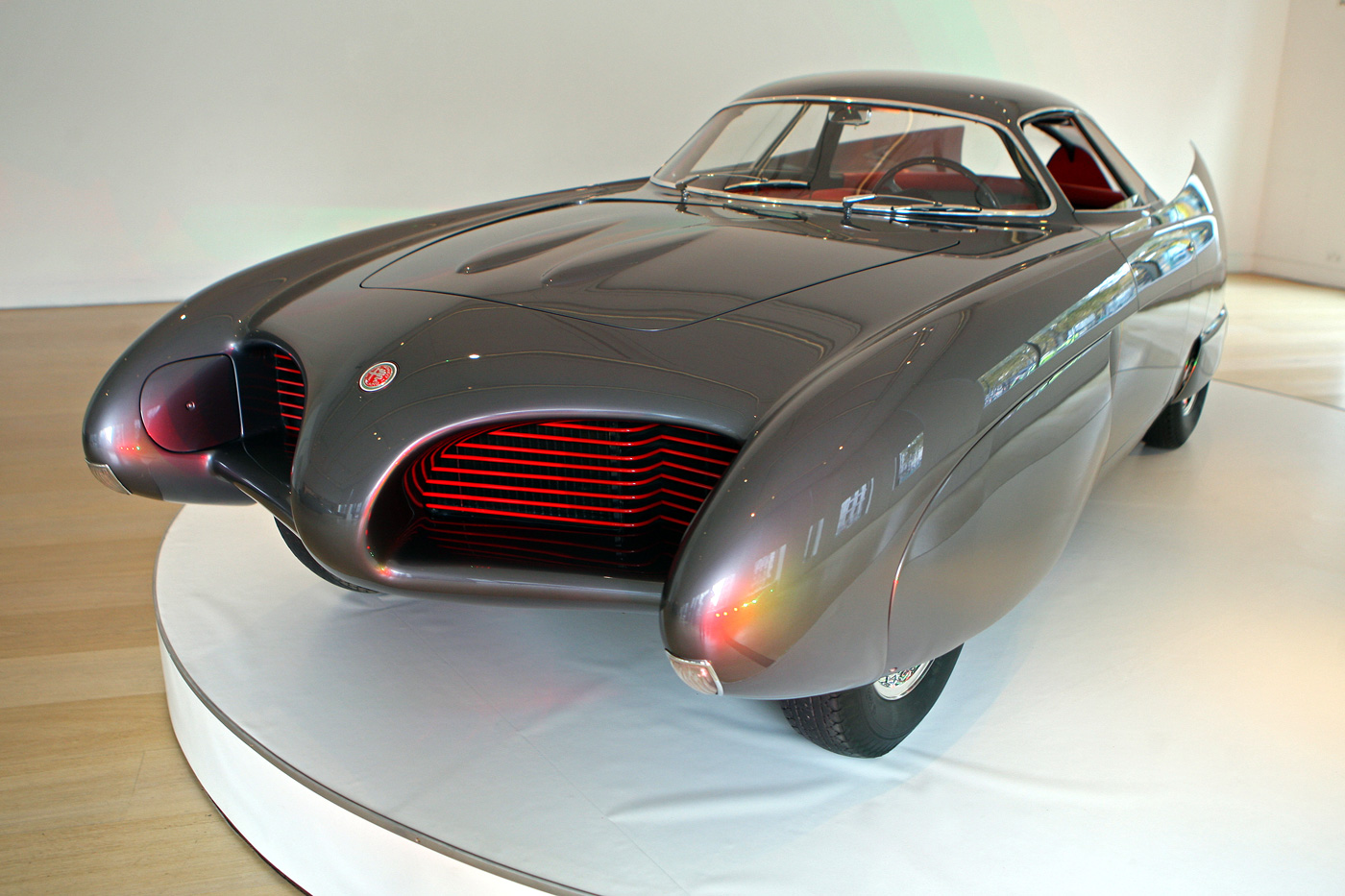
After making a few sketches, working with Ezio Cingolani, who was responsible for fabrication, Franco Scaglione developed a full size model, watched daily by Nuccio Bertone.
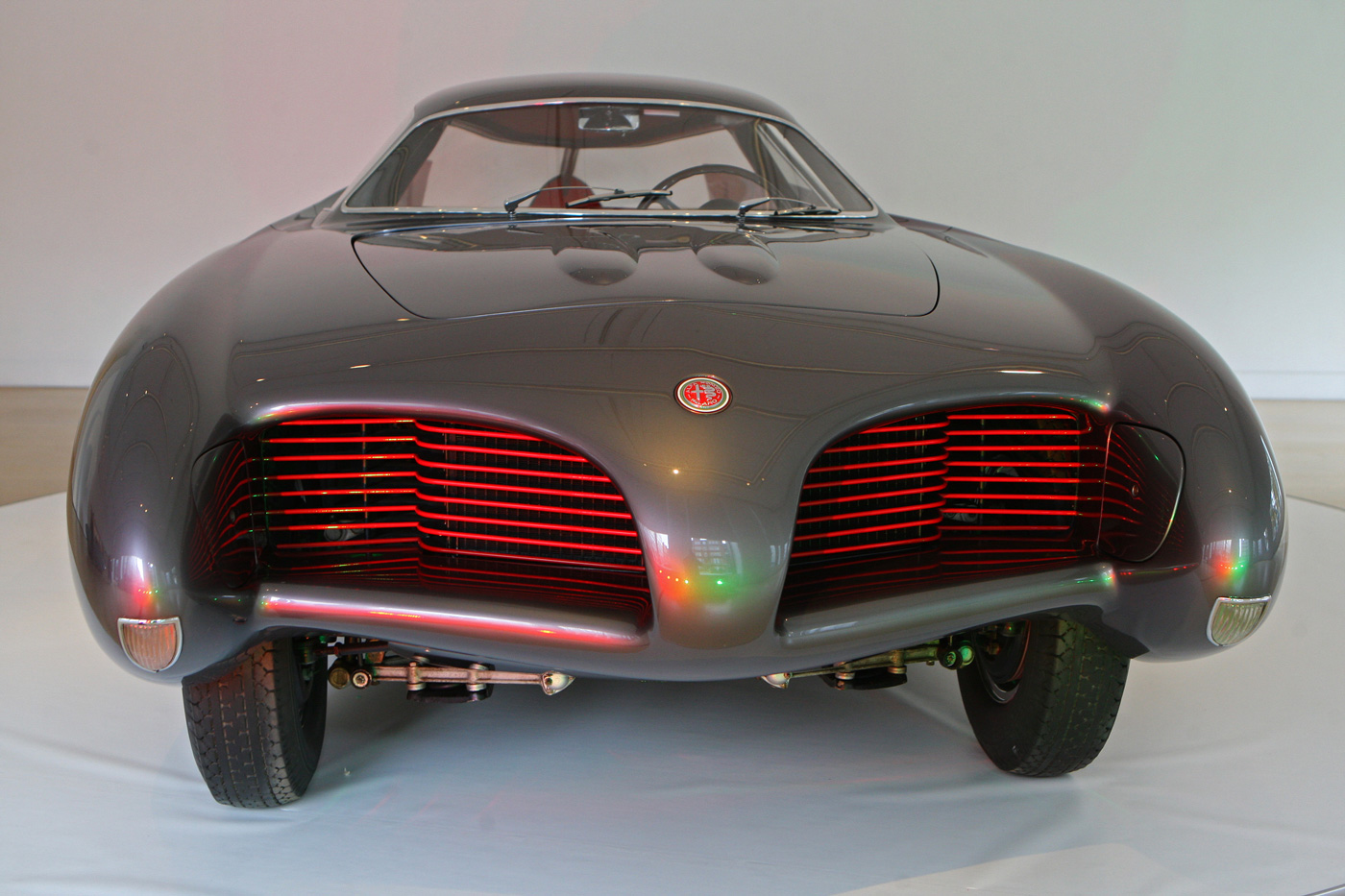
“The entry form must give a smooth penetration,” wrote Scaglione in an article for Auto Italiana in 1954 about designing the B.A.T. Headlights, signal lights, bumpers, all but disappeared.
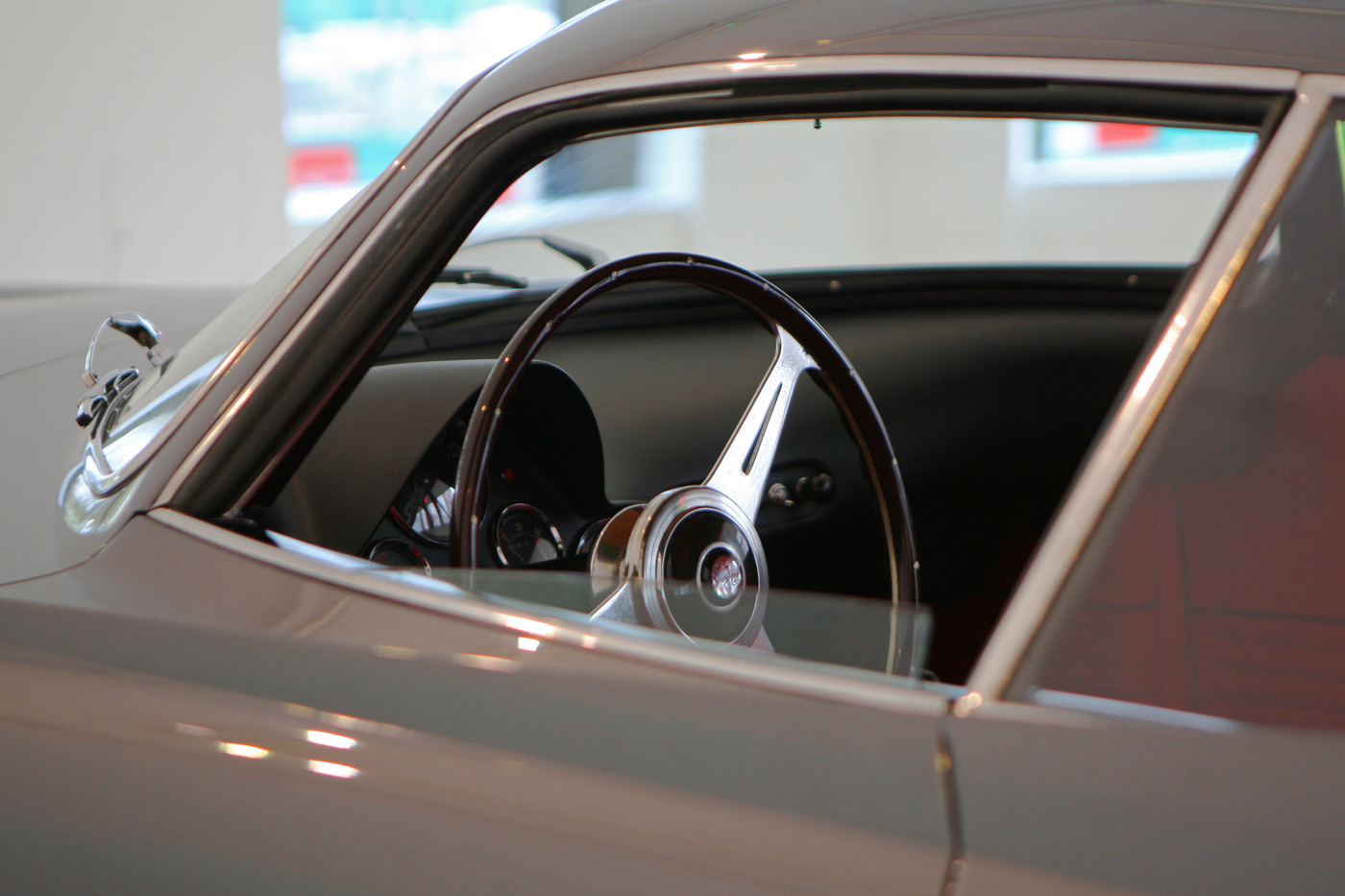
Despite being a concept car, B.A.T. 5 was driven by S.H. Arnolt for over 7000 miles. Rear visibility was probably limited!
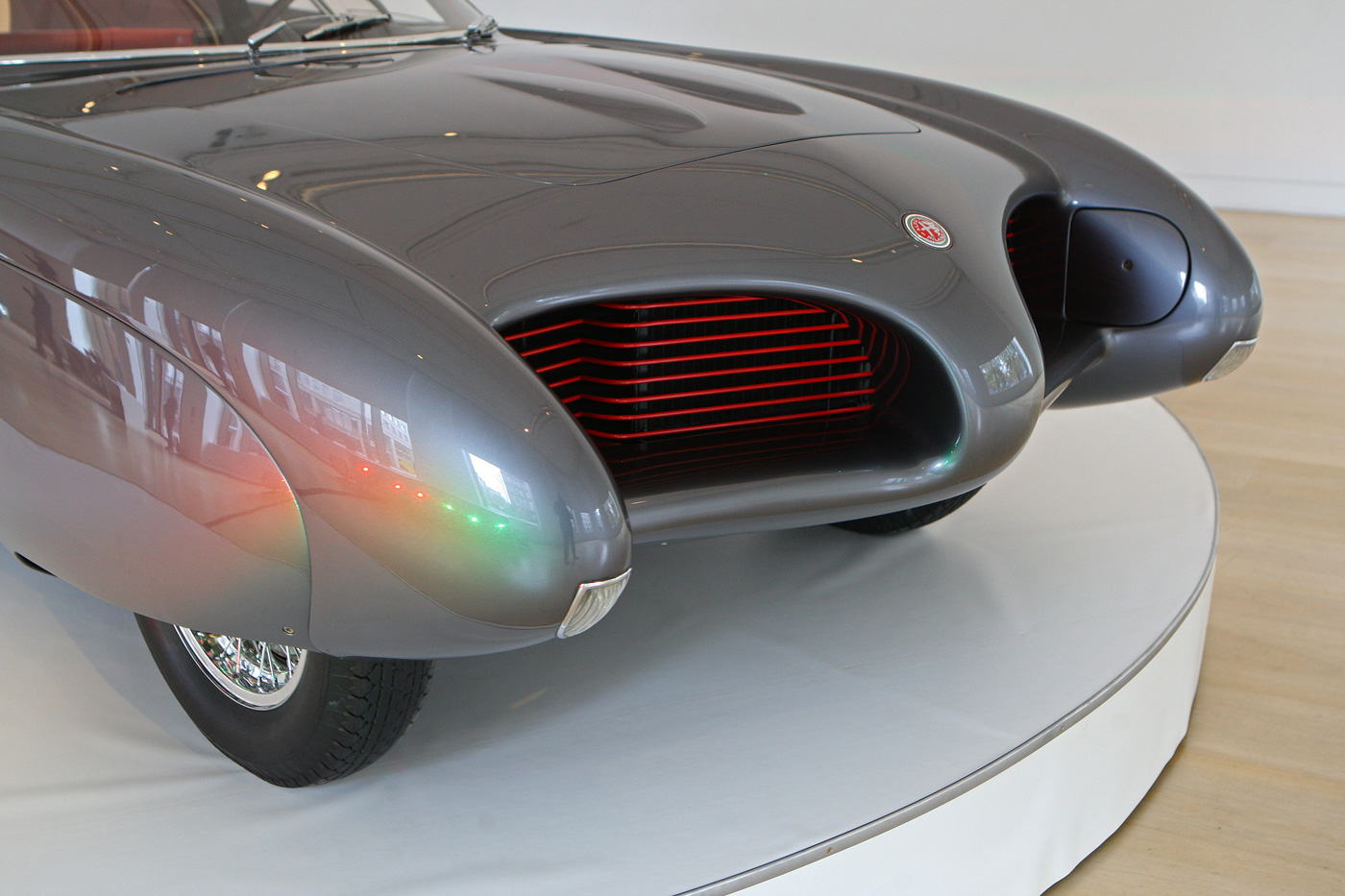
The headlights hid behind the covers which opened sideways, unlike the Cord or Ferrari 308s. The air flow to the radiator was limited to exactly what was required.
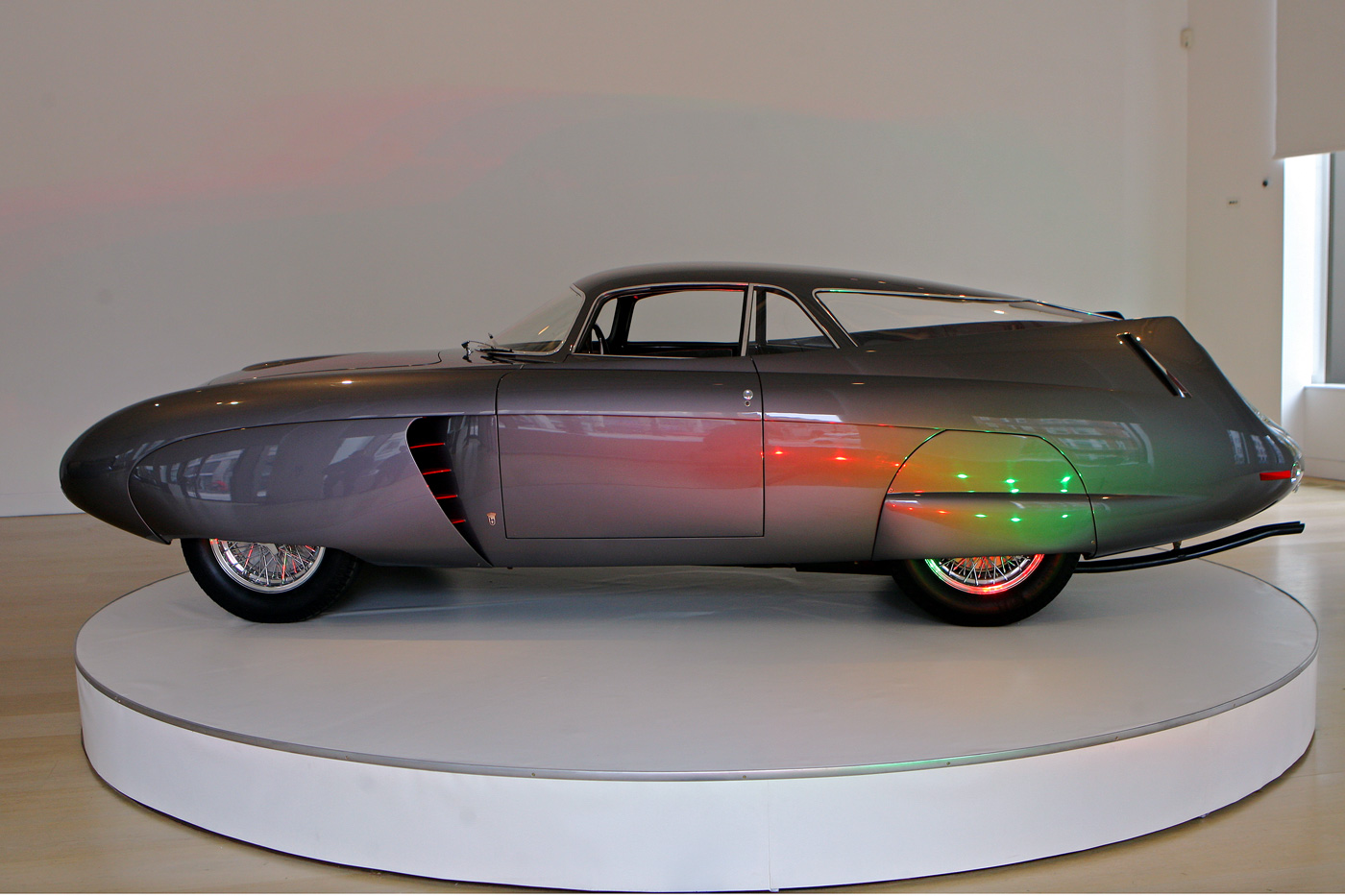
Not always noticed is the enormous relative length of the two rear windows, almost half the length of the car itself.
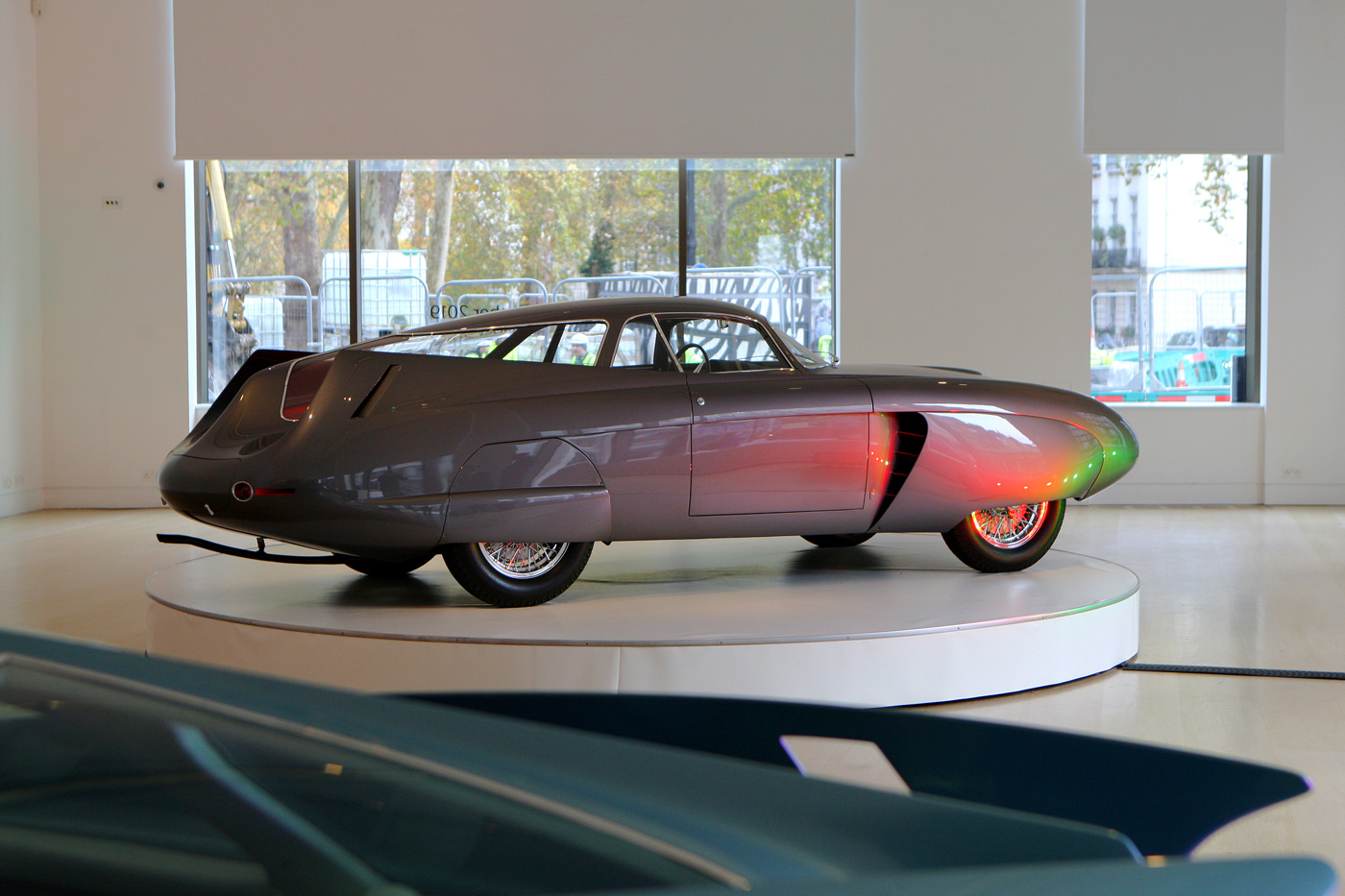
Noticeable in particular at the Philipps Exhibition, is the placement of the exhaust pipe, seemingly out of sync with the aerodynamic style and begs to be hidden. And when looking at photos of the car at Turin in 1953, no sign of a tailpipe can be seen. Interesting.
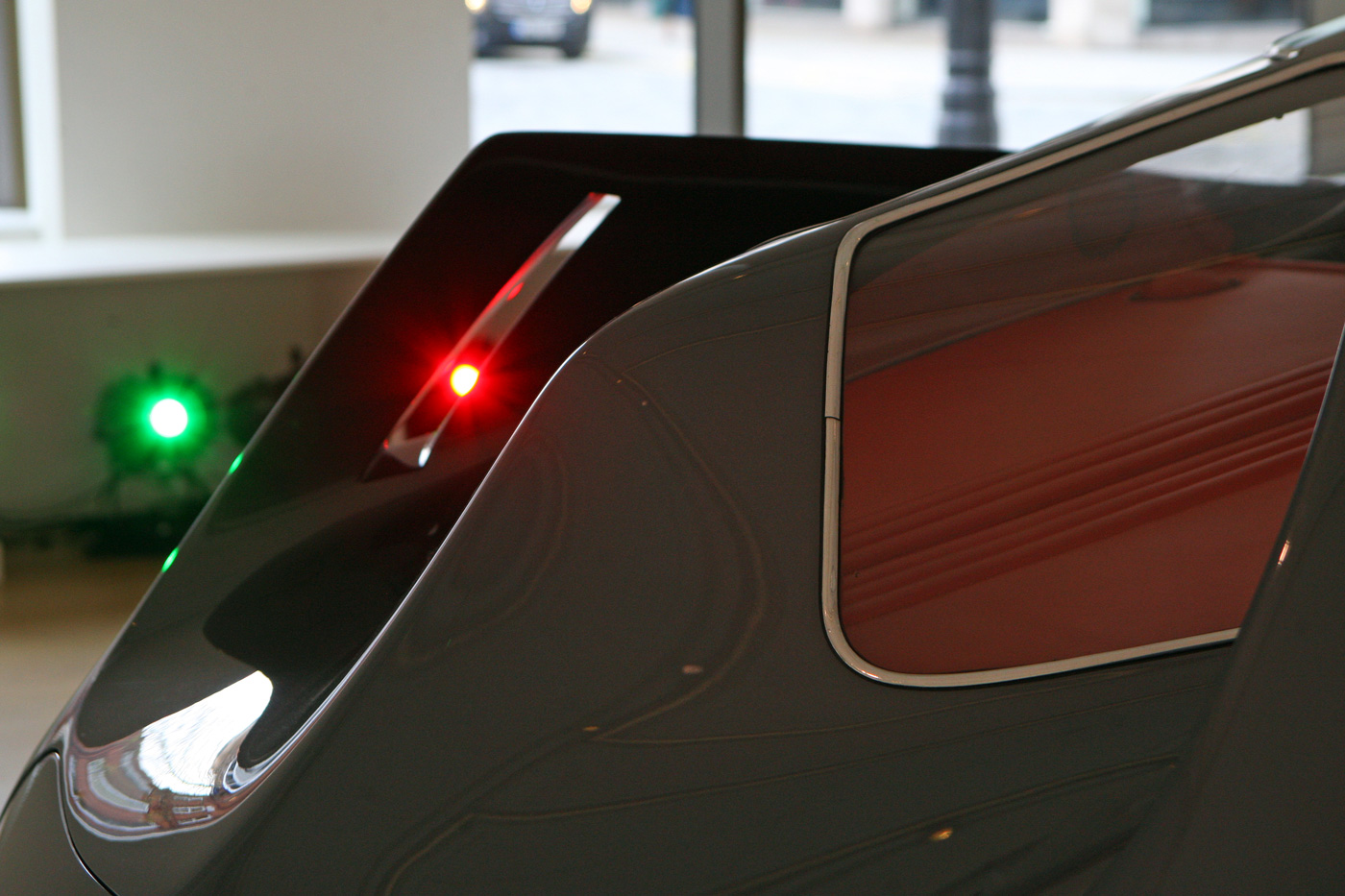
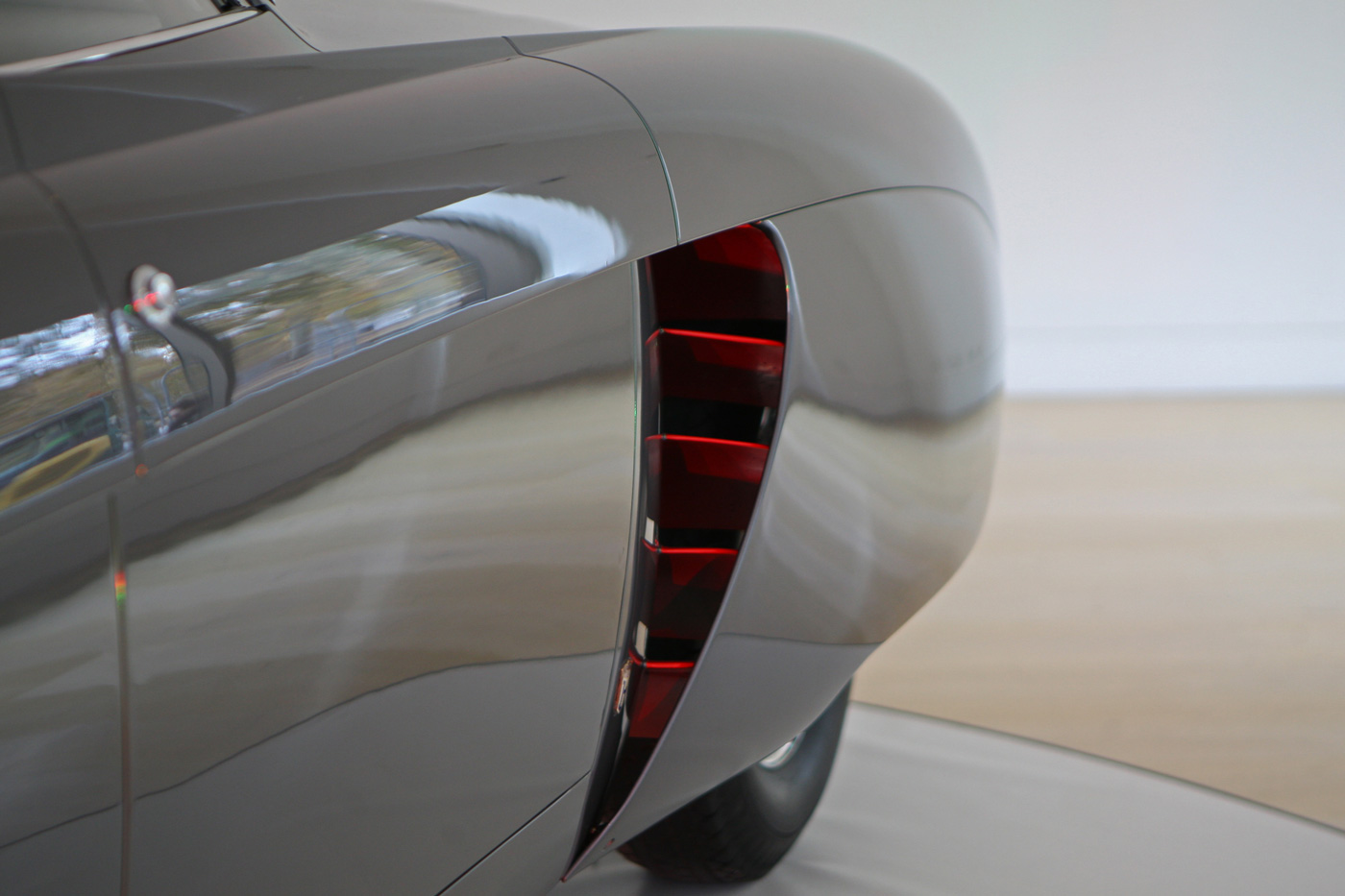
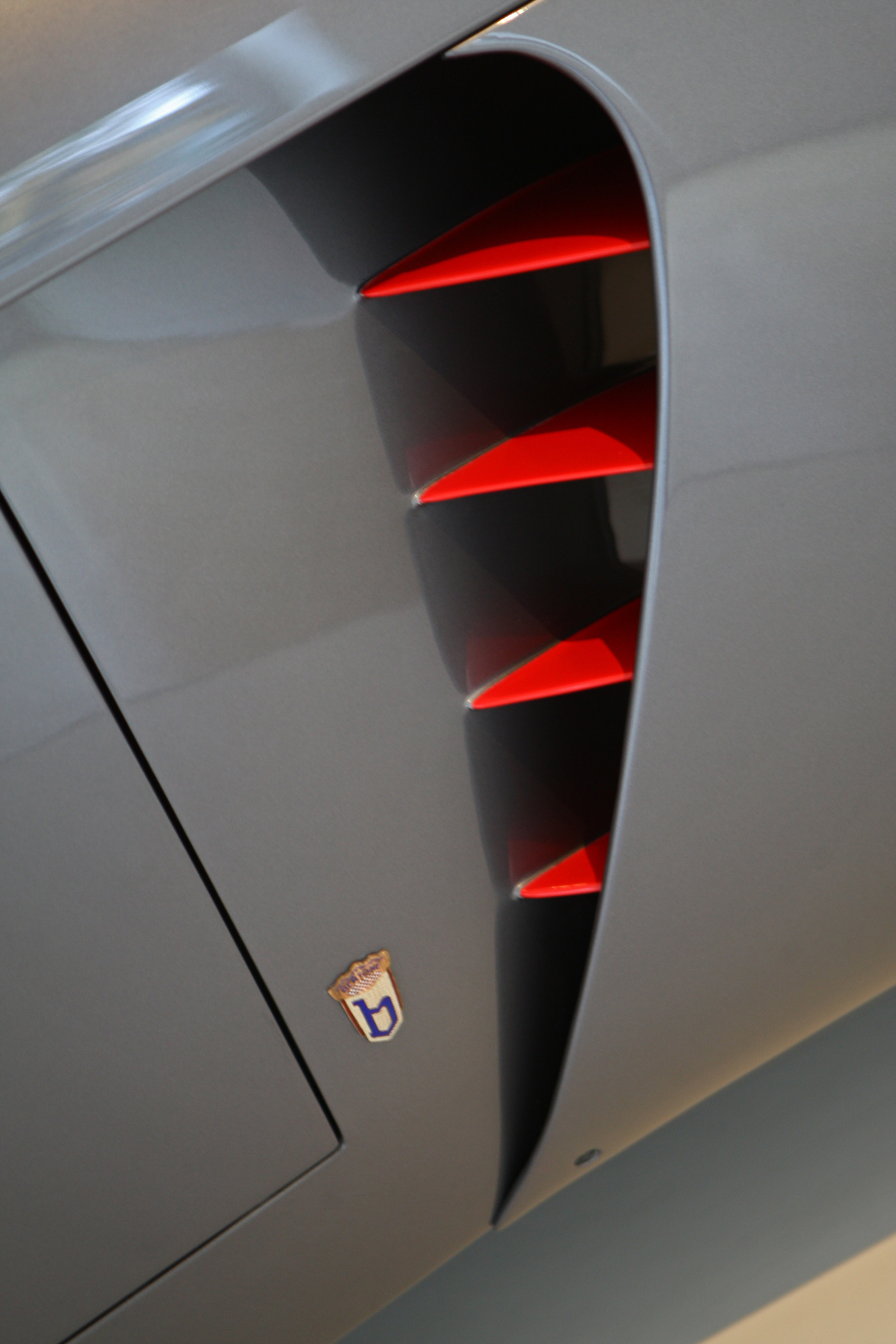
The vertical fins remind me of Savonuzi’s Cisitalia Aredynamica of 1947.
Joe Prysak was quite a character. Had an eye for brilliance I remember the car in his shop and playing around with it. Mary his partner is still alive we talk often as we are neighbors she still has the shop.
The design department must have been big fans of Buck Rodgers.
The supposed BAT-3 was found some years back in a large garage on a Connecticut estate. It has all the earmarks & genetics of a BAT. The providence of the car lends credibility to a BAT-3. Why is it not mentioned here?
We did, in the first sentence. Click on the story B.A.T. 1 to see if that’s what you are refering to…
“The first of the B.A.T.s was perhaps the most celebrated, gaining notice in magazines across the western hemisphere. But was it the first? Rick Carey, writing in VeloceToday, thinks the Packard-Abarth Bertone might have been B.A.T. 1. Nevertheless, B.A.T. 5 was shown first in April of 1953 at Turin.”
The 2003 Christie’s catalog description which I wrote can be accessed at: https://rickcarey.com/1952-abarth-1500-biposto-coupe/
There is a follow-up observation from Pebble Beach 2010 when the restored Biposto made its reappearance at: https://rickcarey.com/the-abarth-biposto/